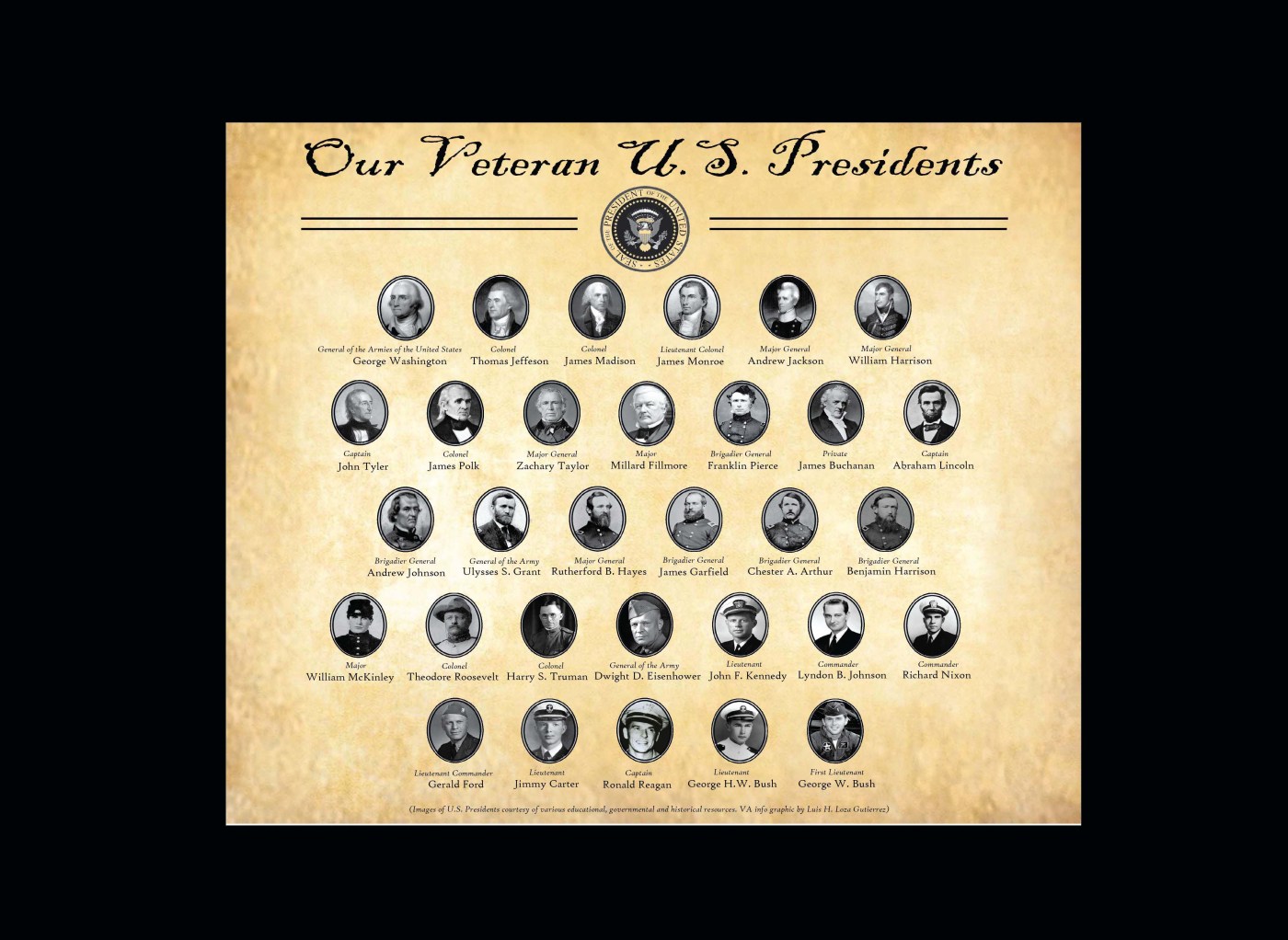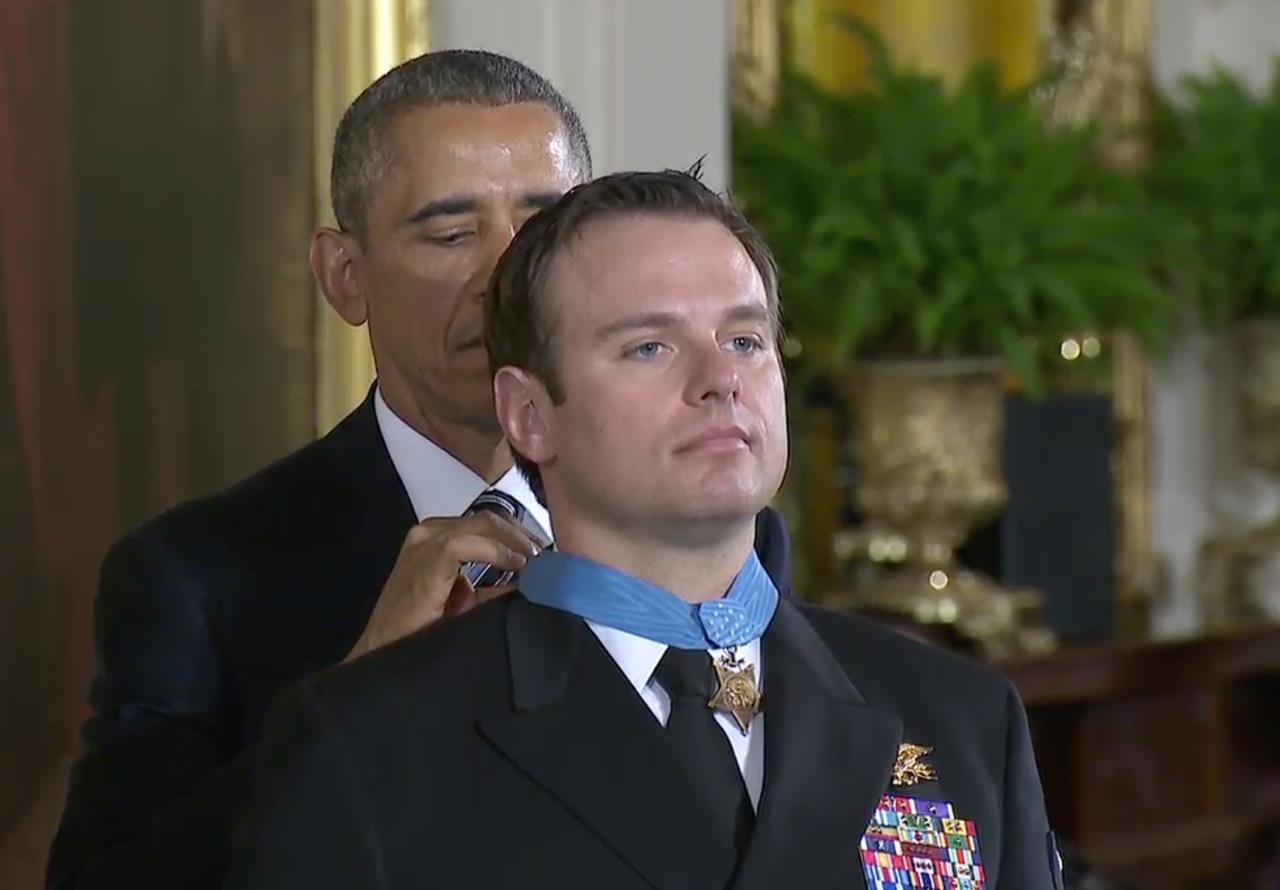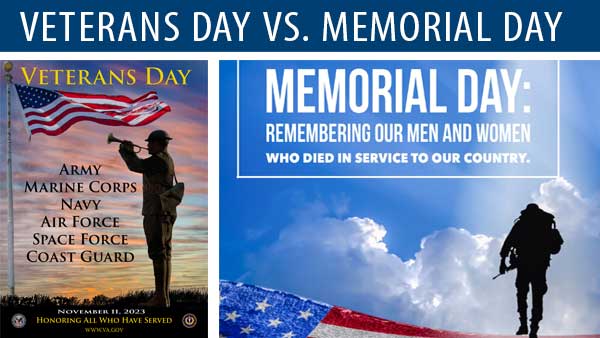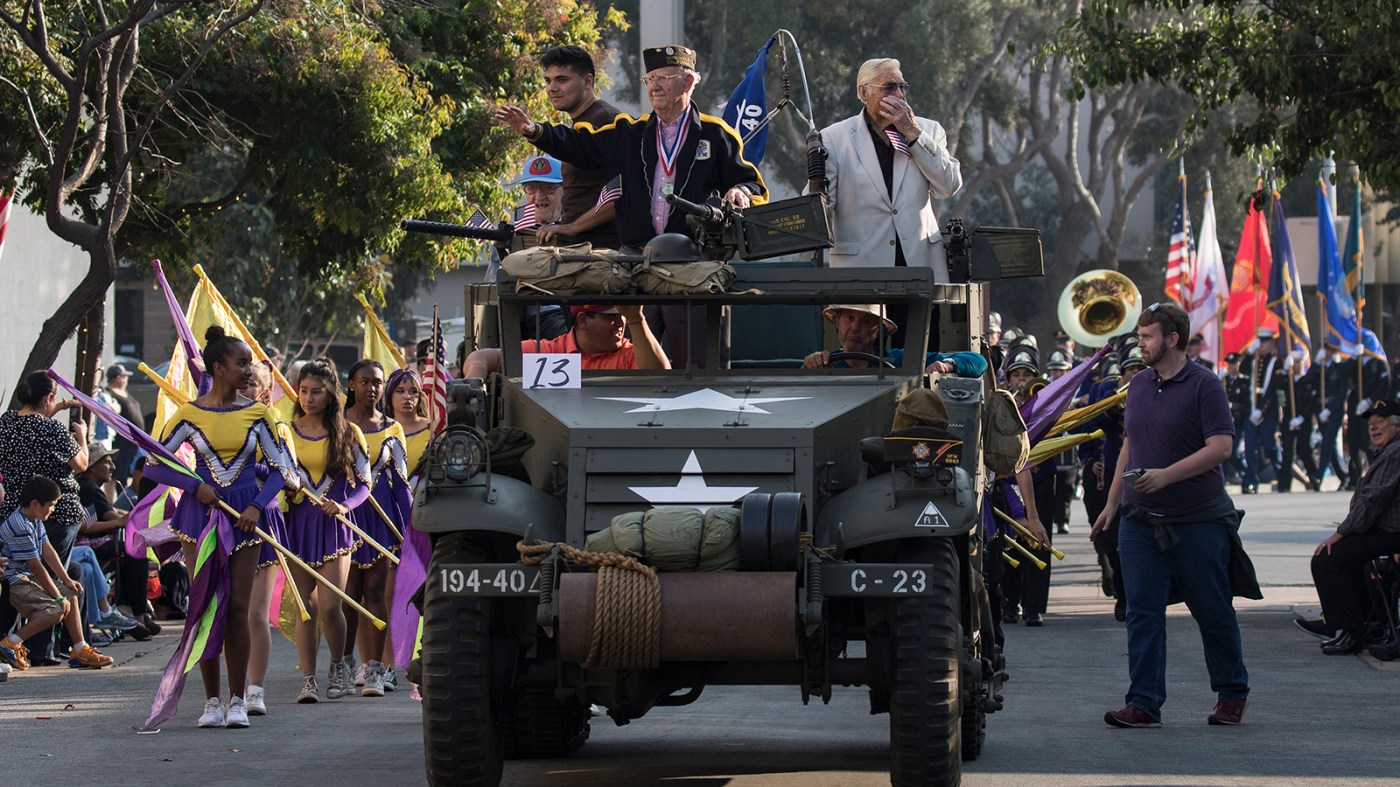The majority of our nation’s presidents hold the distinction of once being called a Veteran before they ever held the title of Commander-in-Chief.
The following facts are being presented in observance of President’s Day, which takes place this year on February 18. Thirty-one of the 45 U.S. presidents have served in the U.S. armed forces, and 12 of them were general officers (O-7 to O-11 with one, at least in theory, O-12).
The three presidents to hold the highest military ranks were: George Washington, Dwight D. Eisenhower and Ulysses S. Grant, respectively.
Washington held the rank of lieutenant general which would put him at O-9 using today’s existing pay grade scale for U.S. service members, but in 1976, then-president Gerald R. Ford posthumously appointed him to General of the Armies of the United States.
The only other person to hold the same title was Gen. John J. Pershing, who retired on Sept. 13, 1924. Although both Washington and Pershing received the same appointment, Washington is considered the higher-ranking officer as President Ford specified he would rank higher than all officers past, present and future. While there’s technically no extra star, it’s the only rank above five-star general. This special appointment would theoretically make Washington a six-star general, or O-12.

The three presidents to hold the highest military ranks are: Presidents George Washington (center), Dwight D. Eisenhower (at right) and Ulysses S. Grant (at left), respectively. Washington held the rank of lieutenant general (O-9) when he died, but in 1976, then president and former Naval Reserve Lt. Cmdr. Gerald R. Ford, posthumously appointed him to General of the Armies of the United States, which would theoretically make him a six-star general or (O-12). The president’s declaration indicated that Washington would rank higher than all officers past, present and future. Eisenhower’s highest rank was that of a five-star general. He served as Supreme Allied Commander in Europe during World War II (1942-1945). Although the title General of the Army is associated with the five-star insignia, Grant held the position as a four-star general. (Photos courtesy of Library of Congress. U.S. Air Force graphic by Senior Airman Luis Loza Gutierrez)
President Eisenhower reached the status of a five-star general while serving as Supreme Allied Commander in Europe during World War II (1942-1945). He is one of only nine U.S. officers to have worn the five-star insignia. In all, four Army generals, four Navy admirals, and one Air Force general have officially worn the five-star insignia.
President Grant served as lieutenant general until congress enacted legislation authorizing the grade of General of the Army on July 25, 1866. Although that title is now associated with the five-star insignia, Grant held the position as a four-star general. He saw combat in both the Mexican-American War and the American Civil War.
Presidents Benjamin Harrison, Chester Arthur, and Franklin Pierce were brigadier generals(O-7), while Presidents William H. Harrison, Rutherford B. Hayes and Andrew Jackson reached the rank of major generals during the 1800’s. President Jackson became a national war hero after defeating the British in the Battle of New Orleans during the War of 1812. In addition to those who went on to achieve general officer ranks, ten of the presidents obtained the rank of colonel (O-6). A couple of those colonels were also two of our nation’s Founding Fathers: Thomas Jefferson (third president) and James Madison (fourth president). Both were colonial militia men, which would be considered the earlier version of today’s National Guard.
Other presidents who served as Army colonels were Harry S. Truman and Theodore Roosevelt (26th president). During the Spanish-American War, Roosevelt helped organized and command the 1st U.S. Volunteer Cavalry Regiment, better known as the Rough Riders. As a former president, Roosevelt volunteered for service in World War I, however, then-president Woodrow Wilson, declined Roosevelt’s offer. Teddy Roosevelt posthumously received the Medal of Honor in 2001.
Two of the presidents reached the pay grade of O-5. One of those O-5s was our 36th president and former Navy commander, Lyndon B. Johnson. LBJ served during World War II and was presented a Silver Star medal by Army Gen. Douglas MacArthur for his role in a B-26 bomber mission. The other was President James Monroe (fifth president).
Two other presidents who had notable military service in the Navy were John F. Kennedy and George H. W. Bush, our 35th and 41st presidents respectively. Both men achieved the rank of lieutenant (O-3) and both served during World War II. JFK earned a Purple Heart and a medal for heroism.

Six out of the 45 U.S. presidents served as officers in the Navy. In military uniforms pictured from left to right top row are: John F. Kennedy, Gerald. R. Ford, Jimmy Carter, George H. W. Bush, Lyndon B. Johnson and Richard Nixon. (Photos courtesy of Library of Congress. U.S. Navy. U.S. Air Force graphic by Senior Airman Luis Loza Gutierrez)
According to his Navy and Marine Corps Medal citation, Kennedy “unhesitatingly braved the difficulties and hazards of darkness to direct rescue operations, swimming many hours to secure aid and food after he had succeeded in getting his crew ashore.” At age 19 our 41st commander-in-chief, President George H. W. Bush, became the youngest person to ever at the time to become an aviator in the U.S. Navy after deferring his admission to Yale University in order to accept his commission. The former Sailor also earned the Distinguished Flying Cross for his actions during a mission. He completed his attack on Japanese military forces despite his aircraft catching fire and ultimately crashing.
Like JFK, LBJ and George Bush senior, Presidents Richard Nixon, Gerald Ford and Jimmy Carter, have the distinction of being referred to as our Six Sailor Presidents.
President Bush’s son, George W. Bush became the nation’s 43rd president, but not before serving as a pilot with Texas Air National Guard’s 147th Fighter Group at Ellington Field. He completed flight training, and served as an F-102 fighter pilot before he left the Guard in 1973 after obtaining the rank of first lieutenant. He is currently the only president to have served in the modern-day U.S. Air Force.
Ronald Reagan the 40th U.S. president, was part of the Air Force’s early history. Reagan served as a captain in the U.S. Army Air Force (also known as Army Air Corps). He helped make more than 400 training films when he was assigned to the 1st Motion Picture Unit in Culver City, Calif. He was discharged from active duty in 1945, prior to the Air Force becoming its own separate military service in 1947.
![President George W. Bush completed flight training, and served as an F-102 fighter pilot before he left the Air National Guard in 1973 after obtaining the rank of first lieutenant. He is currently the only president to have served in the modern-day U.S. Air Force; however, Ronald Reagan, our 40th president was part of the Air Force’s early history. Reagan served as a captain in the Army Air Force [also known as Army Air Corps]. (Photos courtesy Texas Air National Guard. and Ronald Reagan Library. U.S. Air Force graphic by Senior Airman Luis Loza Gutierrez)](https://vaww.blogstest.va.gov/vantage/wp-content/uploads/sites/3/2018/02/Air-Force-Presidents.jpg)
President George W. Bush completed flight training, and served as an F-102 fighter pilot before he left the Air National Guard in 1973 after obtaining the rank of first lieutenant. He is currently the only president to have served in the modern-day U.S. Air Force; however, Ronald Reagan, our 40th president was part of the Air Force’s early history. Reagan served as a captain in the Army Air Force [also known as Army Air Corps]. (Photos courtesy Texas Air National Guard. and Ronald Reagan Library. U.S. Air Force graphic by Senior Airman Luis Loza Gutierrez)
According to Renee Hylton, a historian for the National Guard Bureau, election of officers within militia units was a common practice at the time.
Lincoln’s predecessor, James Buchanan, the 15th president, held the lowest rank among our Veteran U.S. presidents. He was a private (E-1) in the Army, and the only president who enlisted without becoming a commissioned officer. He saw combat during the War of 1812.
For more information about U.S. presidents, visit the official White House website.For a complete list of U.S. Veteran Presidents, click on the following link to an official web page for National Museum of American History.
(Current military pay grades were used as a universal basis for comparison between the ranks as military rank structures changed throughout history. Information for this article was compiled from various public, educational, governmental and historical sources.)
_______________________________________________________________________________________________
Clicking on the hyperlinks of the names of the presidents mentioned in the article will provide further information and verification of the information provided in this story.
Topics in this story
More Stories
VA recently developed a pilot program providing direct and specialized assistance for the 65 living Medal of Honor recipients nationwide.
Memorial Day, which is observed on the last Monday in May, was originally set aside as a day for remembering and honoring military personnel who died in the service of their country, particularly those who died in battle or as a result of wounds sustained in battle.
This year, Veterans Day ceremonies recognized by VA will be held in 66 communities throughout 34 states and the District of Columbia to honor the nation's veterans.






